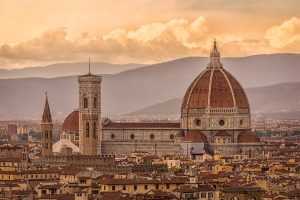The Renaissance was a period of intellectual and artistic growth that took place in Europe in the late 13th and early 14th centuries. It is often characterized as a ‘rebirth’ of culture and learning that was lost during the medieval era. The Renaissance began in Northern Italy, where a number of European cities, such as Florence, Milan and Rome, had enjoyed a period of relative peace and prosperity, in contrast to other regions of Europe. It was here, in Northern Italy, that a number of key factors combined to lay the foundations for the Renaissance.

In Northern Italy, the citizens of these cities enjoyed economic and political independence, which freed them from the rule of a feudal lord and allowed them to develop their own unique economies. This newfound autonomy meant that these cities were able to pursue trade, commerce, and public improvement more freely than in other parts of Europe. As a result of this, the Italian city-states were able to accumulate great wealth and attained high levels of affluence. This, in turn, allowed them to support Renaissance art, architecture, literature, and science.
In addition to this political and economic freedom, Northern Italians had access to an abundance of intellectual and artistic resources, in comparison to the rest of Europe. This was because many of these cities had close links to the classical world and were the home of the great Italian universities. The universities in Northern Italy had a rich tradition of studying the classics, and many students wanted to continue this tradition. This enabled them to read and study the works of the ancient Greek and Roman writers, which provided an invaluable source of inspiration and knowledge to the Renaissance thinkers. Furthermore, these cities were home to ambitious, wealthy patrons of art and literature, who provided the financial backing required to bring about the Renaissance.
Finally, Northern Italy was also a major cultural center, and home to many intellectual and artistic luminaries, who provided a major cultural influence to the region. Great names such as the painter and sculptor Michelangelo and painters Botticelli and Titian all flourished in the Renaissance cities of Northern Italy, and were major figures in the development of Renaissance art. As a result, these cities became the major focal point of this new artistic and intellectual awakening.
In summary, it was a combination of economic and political freedom, access to intellectual and artistic resources, and the influence of cultural luminaries, that enabled the Renaissance to flourish in Northern Italy. Since then it has come to be recognized as having had a huge impact on history, the arts, and philosophy.
Trivia: The Italian poet Petrarch is credited as the ‘Father of the Renaissance’, as his works set the tone for the artistic and scientific movement of the period.
